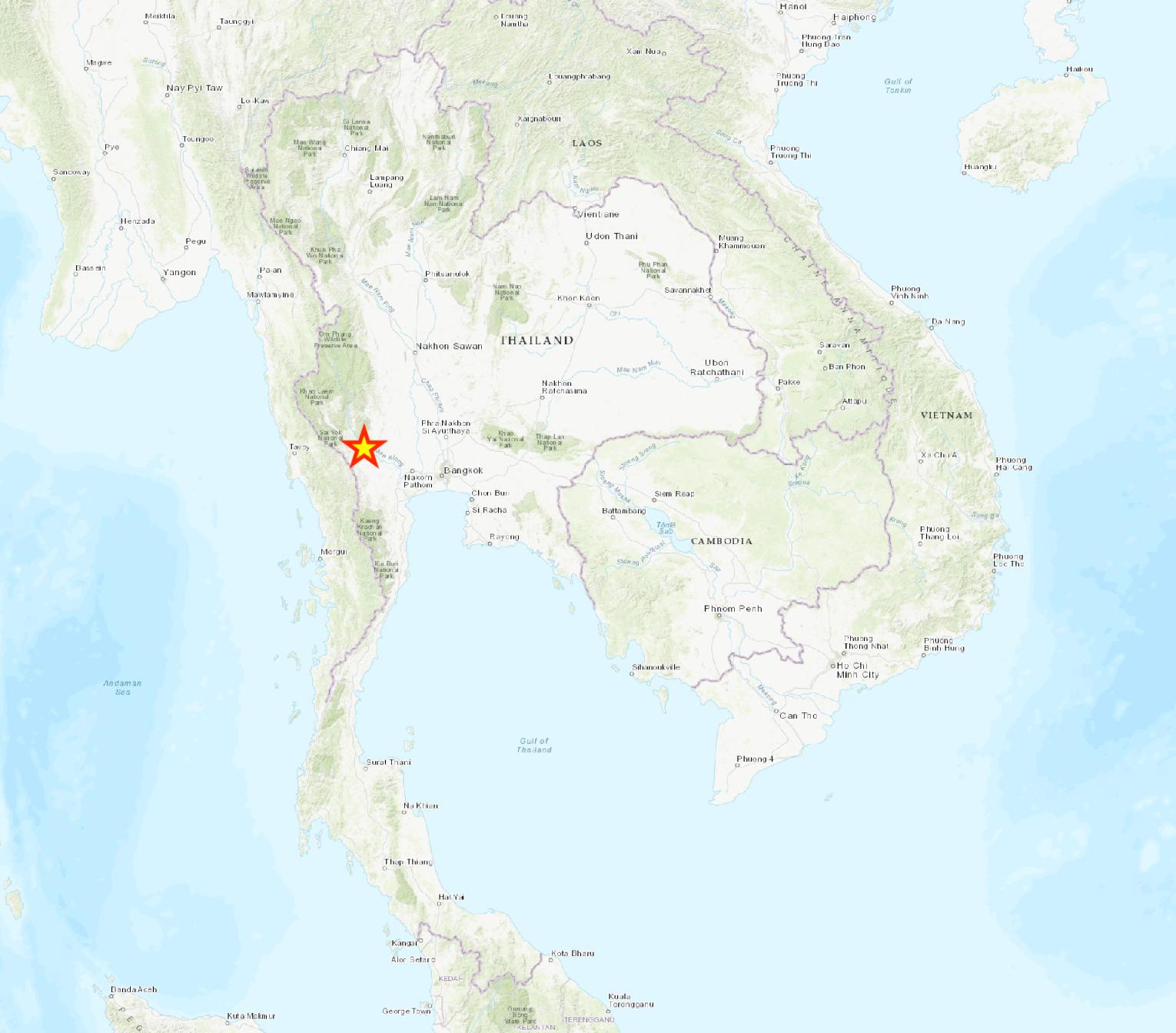Tha Manao Limestone Fm
Type Locality and Naming
Along a ridge of low to moderate relief, Khao Tha Manao east of Tha Manao village on the road to Chao Nen Dam, Kanchanaburi province. Upper unit is the Chao Nen Gr.
Synonym: หมวดหินปนู ทา่ มะนาว
Lithology and Thickness
Limestone, calcareous mudstone; ca. 450 m. Lower part of the limestone which is thickly bedded, contains abundant chert nodules and occasional Ordovician, nautiloids; Upper part is thinly bedded, grey recrystallized limestone with interbedded thin sandstone, grading upwards from the thick bedded limestone. The limestone subsequently grades upward to interbedded quartzite and phyllite. Uppermost part of formation consists of dark, light grey and brownish-grey thinly bedded dolomitized limestone
Tha Manao Limestone Formation correlates to Units C, D and E of Hagen and Kemper (1976); therefore an upward succession of:
C (lower unit) = Limestone: 100 – 200 m thick; pure; dark grey to black; with beds rich in unidentifiable gastropods and other shell fragments. Some conodonts of Early to Mid-Ordovician age.
D (middle unit) = Sandy limestone: several hundred meters thick; thin-bedded and often cross-bedded, the sandy beds alternating with less sandy beds.
E (upper unit) = Flaser-bedded limestone: several hundred meters thick; light or reddish grey, weathering to red and green; soft, clayey and sandy.
Relationships and Distribution
Lower contact
Underlain by the Chao Nen Quartzite Fm.
Upper contact
Conformably overlain by the white shale of the Silurian-Devonian Thong Pha Phum Gr (Bo Phloi Fm, Bo Phoi Fm)
Regional extent
GeoJSON
Fossils
"Bunopas (1981) described a number of fossil finds from his Tha Manao Limestone to which he ascribed the following ages. At the type section near the Sri Nakharin Dam only Middle Ordovician cephalopods, including the nautiloid Armenoceras sp., are known. A little further north from the type section in Huai Takian (grid reference 201865) pelecypods Cypricardinia cf. prisca indicate a Mid-Ordovician (Llandeilo) age." C (lower unit) = contains beds rich in unidentifiable gastropods and other shell fragments. Some conodonts of Early to Mid-Ordovician age.
D (middle unit) = no fossils reported.
E (upper unit) = siltstone lenses in the lower part contain well-preserved brachiopods and a Middle Ordovician cystoid fauna. The middle part of the unit contains orthoceratids. In the upper part of the unit are Upper Ordovician cystoids as well as trilobites, brachiopods and corals (the latter fossils being very rare in the Lower Paleozoic limestones of Thailand according to Wongwanich & Burrett (1983))." (Kidd, 2011)
Age
Depositional setting
Peri-tidal
Additional Information
"The Lower Paleozoic limestones of Western Thailand are a common host-rock for lead-zinc mineralization. A study of these deposits in Kanchanaburi Province by Diehl & Kern (1981) showed that mineralization took place preferentially in algal- crinoidal reef-like build-ups in the limestone." (Ridd, 2011)
Lexicon of Stratigraphic Names of Thailand of 2013.
